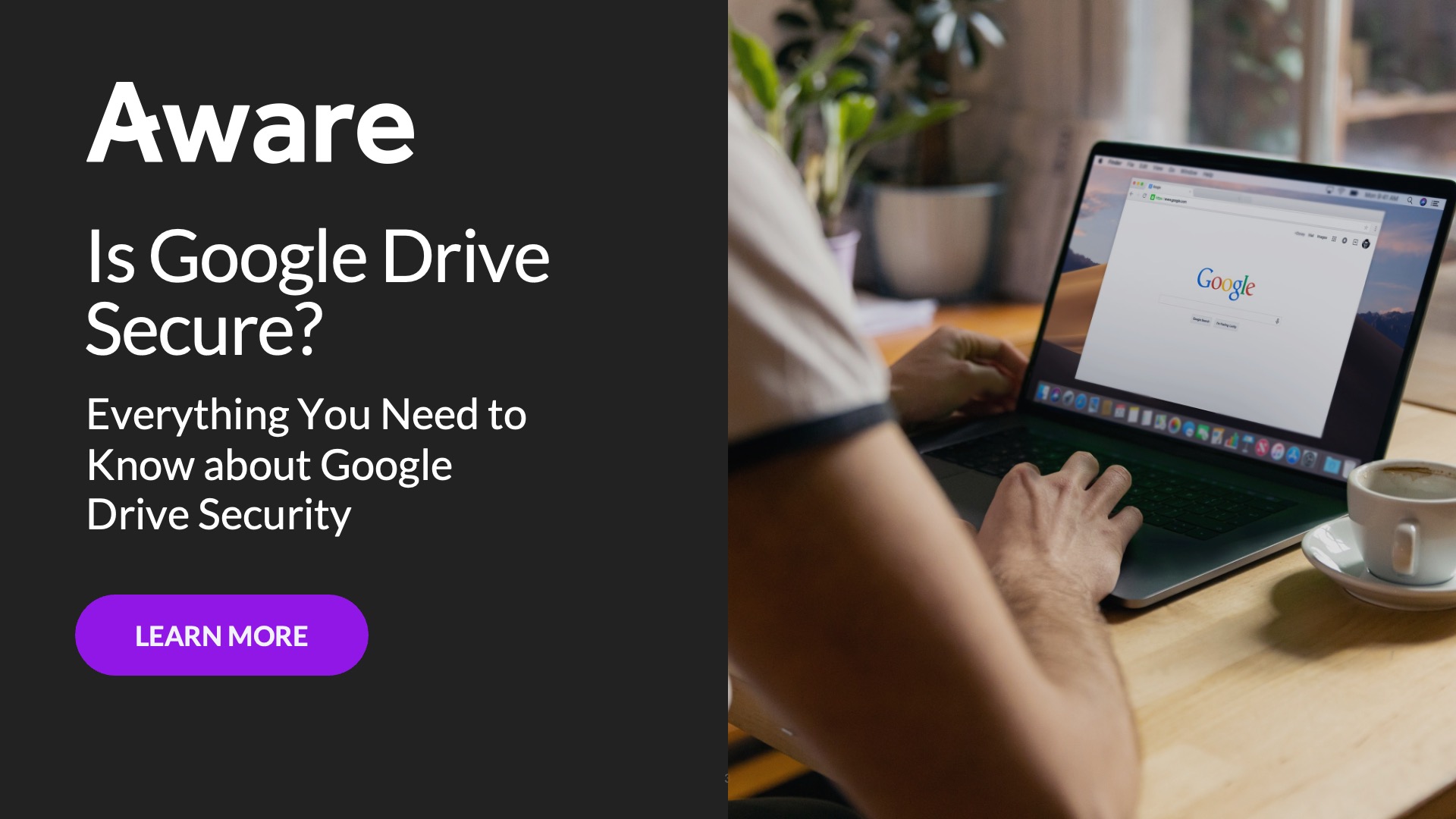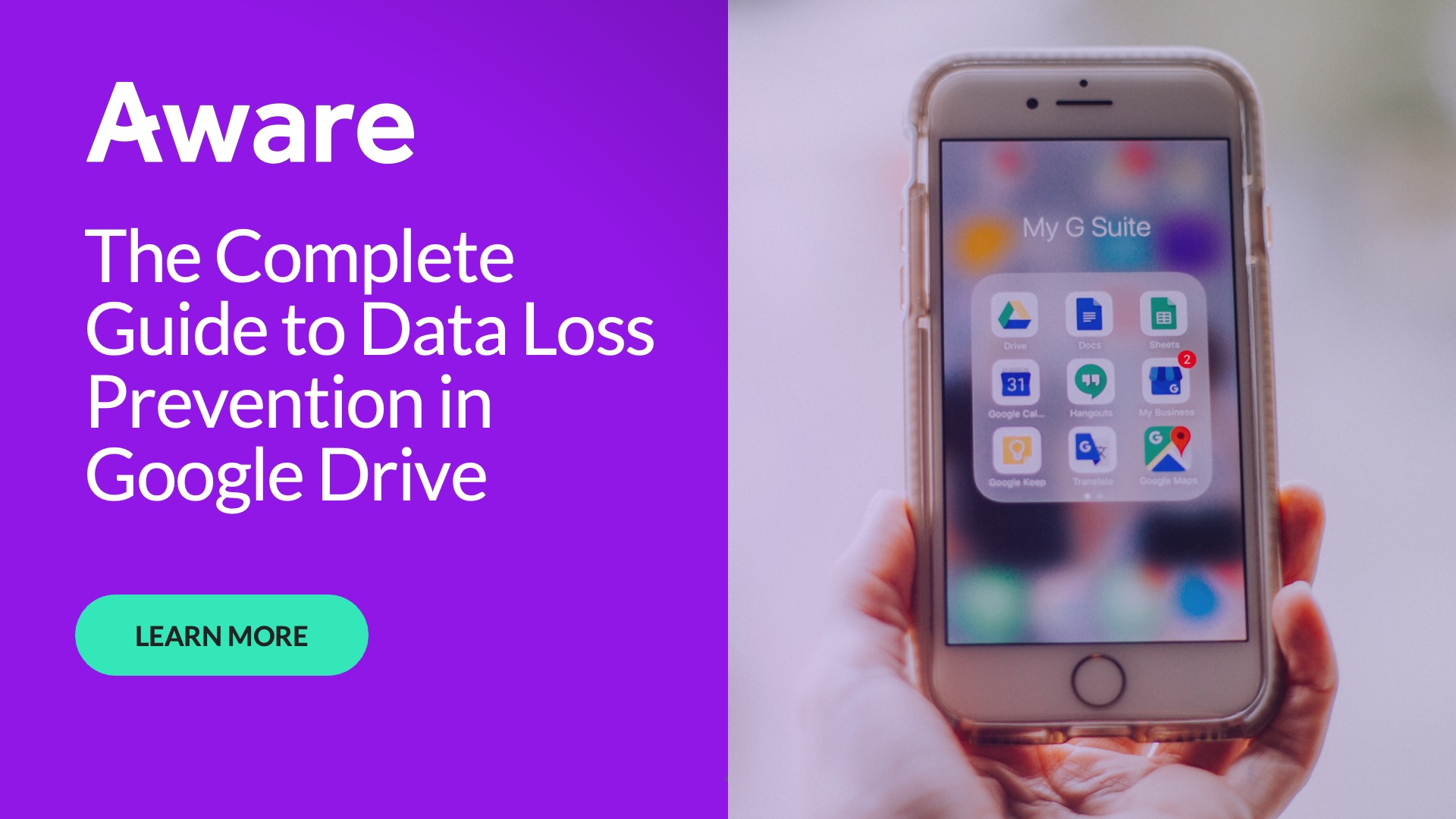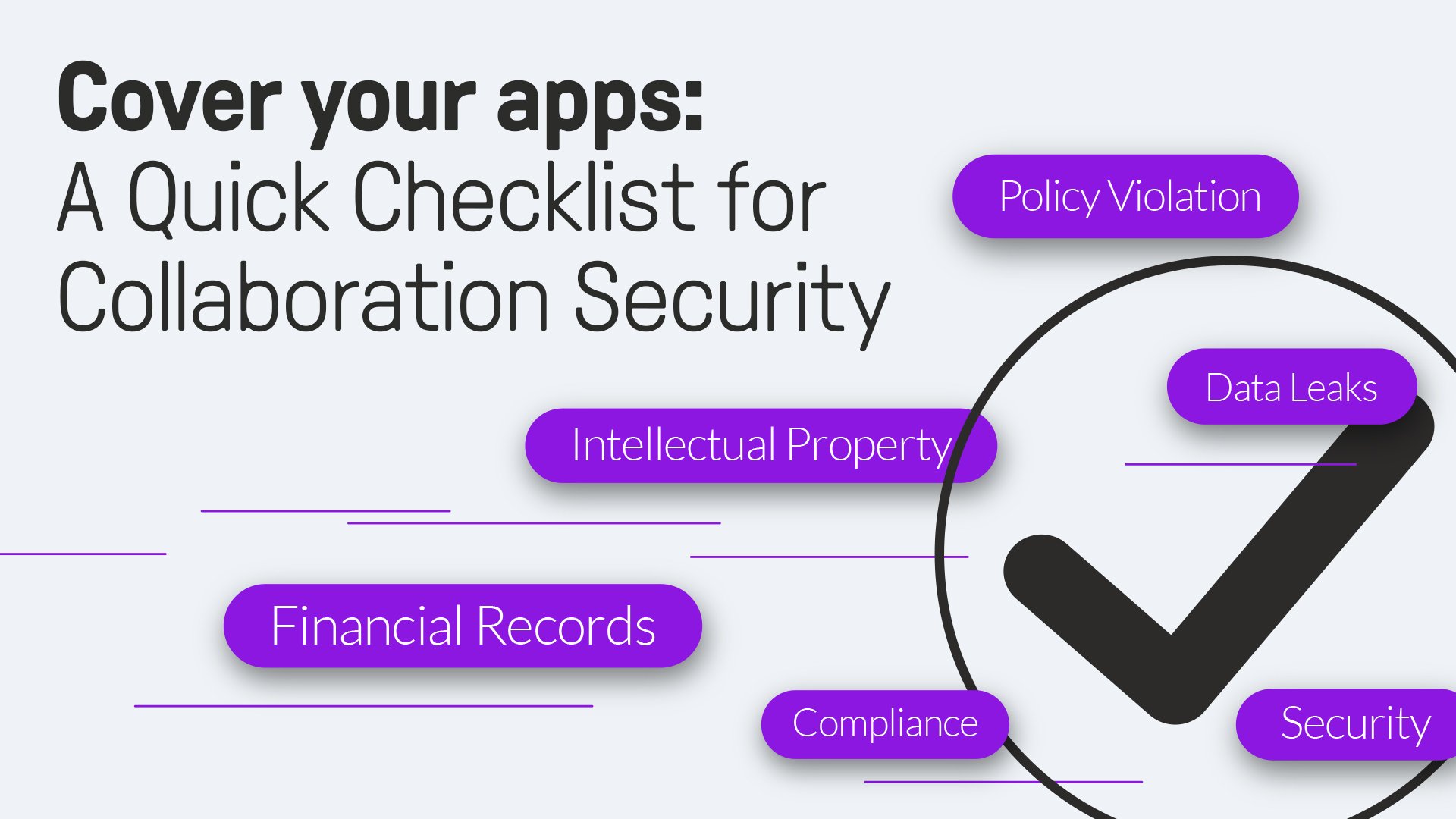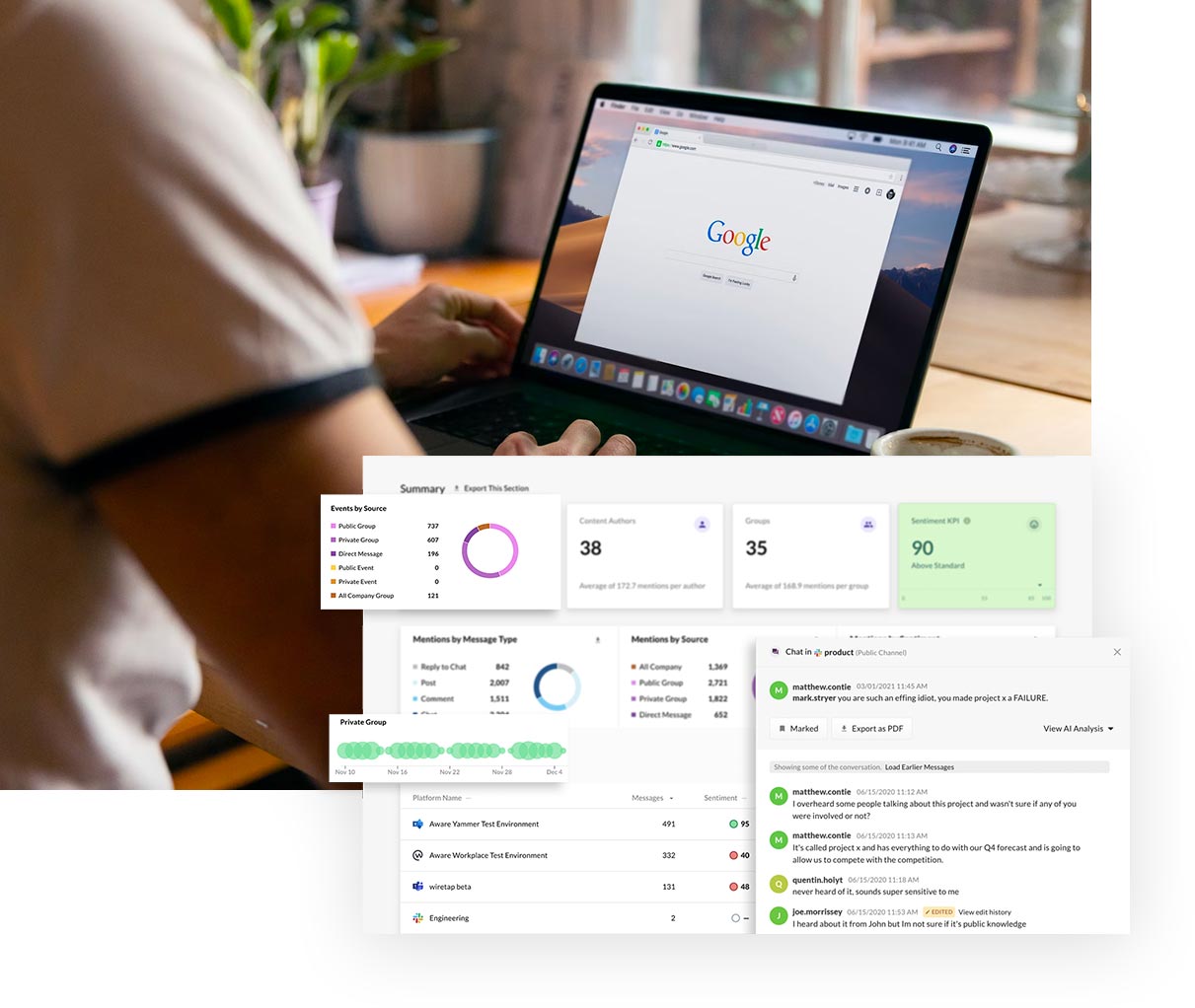The Ultimate Guide to eDiscovery in Google Drive
by Aware
A popular cloud storage solution with widespread adoption, Google Drive provides a user-friendly, convenient way for businesses to enable collaborative, asynchronous work between employees. As organizations increasingly rely on Google Drive, there is growing need for efficient eDiscovery processes within its complex datasets. This post outlines the challenges of performing eDiscovery in Google Drive and compares the solutions available to businesses today.
Contents
- What is Google Drive?
- What is eDiscovery?
- What makes Google Drive data challenging for eDiscovery?
- Is eDiscovery possible in Google Drive?
- What Google Workspace plans support eDiscovery?
- What is Google Vault?
- What’s the difference between Google Vault, Drive API, and Google Takeout?
- Additional considerations for eDiscovery solutions in Google Drive
What is Google Drive?
Drive is Google's cloud-based file storage service, available as an independent product or as part of Google Workspace (formerly G Suite). Google Drive enables businesses to store and share documents and access them remotely from any location.
What is eDiscovery?
When organizations receive a legal notice, compliance notice, or commence an internal investigation, they must identify relevant electronically stored information (ESI) from all the data they hold. The process of searching and analyzing this data is known as eDiscovery. Without the right capabilities to access and effectively search company data, eDiscovery can be extremely costly and time consuming for the company to complete.

Read More: Is Google Drive secure?
What makes Google Drive data challenging for eDiscovery?
The purpose of Google Drive is to make file storage and access fast and easy, causing minimal disruption or inconvenience to the end user. This makes Drive very popular with employees but presents new challenges for organizations that need to secure the data they hold.
Google takes information security seriously and implements industry-standard measures such as encryption in transit and at rest. Businesses also have the ability to impose additional security measures, such as two-factor authentication (2FA), multi-factor authentication (MFA), or single sign-on (SSO) to limit data exposure in Google Drive.
Google Drive also presents challenges when it comes to performing eDiscovery within its dataset. Some of these include:
- Data volume: Widespread adoption of Google Drive within the organization is beneficial for centralized record keeping, but quickly creates a massive dataset that makes search and eDiscovery extremely slow and complex.
- Data fragmentation: One of the features that appeals most to Google Drive users is the ability to collaborate in real time. This has the consequence of spreading data across files, folders, and shared drives, making it harder to understand the big picture and gain a linear understand of what happened when.
- Document versions: Google Drive allows users to save multiple versions of a document, which adds another layer of complexity during data retrieval.
Is eDiscovery possible in Google Drive?
Despite these difficulties, eDiscovery is possible within Google Drive. Several solutions are available that can access, search, and analyze Drive files, enabling early case assessment, internal investigations, and evidentiary disclosures. The eDiscovery options available to businesses depend first on their Google plan.

Read More: The Complete Guide to DLP in Google Drive
What Google Workspace plans support eDiscovery?
Google Vault, Goggle’s native eDiscovery solution, is available as an add-on for several Google plans, including Business Plus, Frontline Standard, Enterprise, and Education plans. To perform eDiscovery with Vault, administrators must have both an applicable Workspace license and an add-on Vault license, which must be purchased for each covered user account. Some Google plans include Vault licensing as standard.
What is Google Vault?
Google Vault is a robust information governance tool that enables eDiscovery, custom data retention rules, and data exports across Google Workspace, including in Gmail, Google Chat messages, Google Meet, and Google Groups in addition to Google Drive.
Using Vault, administrators can set custom retention policies to purge or preserve data in place, search and collect data according to the process outlined by the Electronic Discovery Reference Model (EDRM), and mitigate unauthorized access to Vault features with comprehensive access controls and audit reports.

Claim Your Free Collaboration Security Checklist
What’s the difference between Google Vault, Drive API, and Google Takeout?
Google Vault is not the only available choice for managing eDiscovery within Google Drive. Businesses can choose between a range of third-party applications that may offer more targeted, efficient, or cost-effective solutions that meet the organization’s specific needs. How these apps connect to Google Drive impacts the services they can offer to end users, so it’s important to understand the different ways that eDiscovery tools function within Google Workspace.
- Google Vault: Vault is Google’s native governance and eDiscovery application and, if licensed, connects seamlessly to Workspace.
- Drive API: Google’s Drive API enables third-party applications to connect to Google Drive’s data. One use case for Drive API is eDiscovery.
- Google Takeout: A free export data tool that enables users to download all their Google Workspace data for migration or analysis. Google Takeout provides an option for small businesses to conduct do-it-yourself eDiscovery.
Each option has pros and cons for Workspace users depending on budget, expertise, and specific need. Google Vault, for example, has limited integrations with third-party applications, meaning businesses with more than one web-based storage service would have to invest in multiple eDiscovery solutions. However, connecting through Drive API restricts users to enterprise-wide rate limits, which means large downloads may impact other users in the Workspace.
Google Takeout is a useful solution for simple eDiscovery requirements, as it allows businesses to download all their data for free. However, this is only a one-time snapshot of the Workspace, meaning users can edit or delete information before the export without being detected.
Additional considerations for eDiscovery solutions in Google Drive
While Google Vault is a powerful eDiscovery solution, some organizations may find third-party eDiscovery tools more suitable for their specific needs. Before selecting the right eDiscovery solution, consider the following:
- Cross-platform support. Organizations with multiple storage solutions may be better served by a third-party vendor that can connect with all of them, rather than purchasing multiple eDiscovery tools.
- Additional eDiscovery needs. It’s rare that a business only needs to conduct eDiscovery in a single platform or data type. Third-party eDiscovery providers can provide search and discovery functions in storage, email, collaboration tools, and more.
- Specificity and customization. Google Vault provides comprehensive governance and eDiscovery across Google Workspace, but some businesses may benefit from third-party solutions that can be tailored very narrowly for their specific use cases. This is particularly useful for reducing false positive results in large datasets.
- Tech sprawl. While some organizations will have very narrow requirements for governance, compliance, and legal tools, some enterprises need applications that can provide a wide range of services, such as data retention, analytics, threat detection, and compliance monitoring. Consolidating all these needs into a single admin console simplifies the tech stack and reduces sprawl.
- Budget constraints. Native solutions are rarely the cheapest. Third-party eDiscovery vendors may offer more flexibility with pricing and services to better suit tight budgets.
Final thoughts
Conducting eDiscovery in Google Drive is a critical aspect of compliance and legal procedures for organizations relying on the platform for collaboration and data storage. While Google Vault provides a robust eDiscovery solution, some businesses may opt for third-party tools to address specific challenges or leverage extended functionality. By understanding the complexities involved and choosing the right eDiscovery approach, organizations can efficiently retrieve and manage critical data, ensuring a secure and compliant digital environment.










